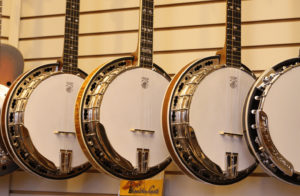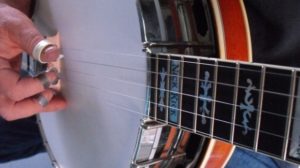Banjo is from the string instrument family like violins and guitars. Their membrane is often made of plastic and on rare occasions animal skins. This instrument was used in the African and American cultures initially. It was used in folk music and country music. Do you know how to play the banjo? It is relatively simple. Some really cool music bands use a banjo in their songs. Some of them are The Eagles, The Allman Brothers, etc. In historic times banjo was a key component in African-American folk music.
It was in the 19th century that it gained popularity in mainstream shows as well. They come in different styles, five-string banjo, six-string banjo, tenor banjo, four-string banjo, low banjo, and a hybrid variety. Each of them is used in a particular genre of music. The sound of the banjo is really pleasant and soothing. Do you know how to play the banjo? Here you will find some ways and methods that will help you play it.
Selecting The Perfect Banjo:
There are four ways to check for a perfect one before understanding how to play the banjo. Let us see those ways one by one.
Choosing The Right Banjo– As mentioned earlier banjos come in different styles like 4-strings, 5-strings, tenor, 6-strings, and hybrids. Therefore, deciding the perfect one will take some patience in beginner’s banjo. Banjos are quite versatile. They go well in all varieties of music and songs. The 4-string or tenor banjo is awesome for jazz music. The 5-string is the most popular choice and is best for folk and classic styles. The 6-strings banjo is used mostly by guitarists as it looks like one and sounds so.
- Open Back or Resonator Banjo– After the types have been selected, next comes the build of this instrument. It comes in 2 builds. Open-back build is used especially by beginners as it is the most affordable option and has a not-so-loud sound. The resonator build is expensive, louder, and should be used if you are dedicated to learning how to play banjo and use it frequently. Therefore, choose according to your need and if you are a totally committed one then go for the resonator build.
- Action and scale– Choose a lower action as it will help you play it easily and smoother. If the action is high, then you will be required to do unnecessary pressure from your fingertips, and then it will go out of tune. The scale however should be between 23-32. For beginners, this scale can be around 26.25 banjos. This is not short or not very long, and it will be placed easily in the middle.
- Style- The above points are necessary to be kept in mind. To know more about the styles, you can sit with some banjo players or local enthusiasts and understand more about the styles and adapt to the one you like. Of course, you can create your own, there is absolutely no stopping.
Learning How to Play Banjo:
The steps are really simple. Let us learn one by one.
- Tune The Banjo- Playing is secondary to the primary part of tuning your banjo. There are different styles of tuning for each type of banjo. For a 4-string banjo the very common tuning is open G. For the tenor banjo it is GDAE or CGDA. The plectrum banjo is CGBD. You can use an online banjo tuner to help you in the tuning process.
- Adjusting The Body– Body adjustment as per the instrument is important. Body posture must be accurate and ideal. You can sit in a relaxed position and hold the banjo at a 45-degree angle or a little upwards so it is visible and does not slouch. Use the banjo straps and be careful as it has a not-so-strong build. It will easily go out of tune if you apply much pressure.
- Hand Movement– Your right hand should be on the strings near the bridge. While the left hand should be holding the neck. The little finger and the ring finger of the right hand should rest on the head of the banjo. Always remember the weight of the banjo must rest on the straps and not on your thumbs.
- Picks– Finger picks to slide with your fingers are a good option. These are similar to the guitar metal picks. The banjo sounds wonderful with little strokes on the string in the upward and downward directions.
- Basic Rolls: There are some basic rolls that you can learn too. You can learn a forward roll which is very common and easy for beginners. You can practice it more and more to make yourself perfect in some of the basic roles.
- Learning More Advanced Music– Once you are perfect in the basic rolls, you can go for some advanced rolls and music. Practicing daily is the key to perfection. You should practice according to your routine and make time for some sessions where you can sit with friends and play for them. It will help you improve your playing and give you more confidence daily.
FAQs
-
Does Having Short Fingers Hinder My Ability to Play the Banjo?
Having short fingers can create some difficulties in the start, but if you practice well, then you will face no such issues after some period. Ultimately practice is the key here.
-
What Should Be the Exact Position of the Bridge?
The bridge should be at the same distance between the 12th fret and the nut of the banjo.
-
Can Left-Handed People Play the Banjo?
Everyone can play the banjo. Use a left-handed banjo, and you will be more comfortable playing it.
-
What to I Do If My Fingers Get Sweaty and Sticky?
Use some nice fabric cloth or wear nice fabric pants to wipe your fingers with. You will face no such issue after that and can enjoy the experience.

Hi, I am William. I am a music enthusiast. I play the guitar and ukulele. I like to try out all instruments and review them, to help others make an informed decision. You must choose the right instrument to get that sweet sound you desire. When I am not on my instruments I will be found reading or cooking.







